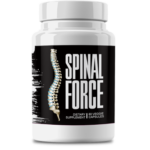This Village-Made Chinese Pain Reliever Eliminates Back And Joint Pain!
Natural Remedies for Arthritis in Ankle Relief

Understanding Arthritis in Ankle
What is Arthritis in Ankle?
Arthritis in the ankle is a condition characterized by inflammation and stiffness in the ankle joint. It can cause significant discomfort and impede mobility. Various types of arthritis, such as osteoarthritis, rheumatoid arthritis, and post-traumatic arthritis, can affect the ankle. This condition is often associated with the wear and tear of joint cartilage or autoimmune responses that attack the joint tissues. Early diagnosis and treatment are crucial to managing symptoms effectively and maintaining a good quality of life.
Causes of Arthritis in Ankle
Several factors can contribute to the development of arthritis in the ankle. Common causes include aging, which leads to the natural degeneration of joint cartilage, and previous injuries, such as fractures or sprains. Obesity can also increase the pressure on the ankle joints, accelerating cartilage breakdown. Inflammatory diseases like rheumatoid arthritis involve the immune system attacking the joint lining, resulting in inflammation and pain. Genetics can also play a role, as some individuals may be predisposed to developing arthritis due to their family history.
Symptoms of Arthritis in Ankle
Symptoms of arthritis in the ankle can vary but typically include pain, swelling, and stiffness. These symptoms are often worse in the morning or after periods of inactivity. As the condition progresses, individuals may experience decreased range of motion, making it difficult to perform daily activities. In some cases, the ankle joint may become visibly deformed. It's important to seek medical advice if you experience persistent pain or swelling in the ankle, as early intervention can help manage symptoms and prevent further damage.
Benefits of Natural Remedies
Why Choose Natural Remedies?
Natural remedies for arthritis in the ankle offer a gentle approach to pain management and inflammation reduction. Unlike conventional treatments that may involve medications with potential side effects, natural remedies focus on holistic wellness. These methods often incorporate lifestyle changes, dietary adjustments, and herbal supplements that support overall health. Choosing natural remedies can be particularly beneficial for individuals looking to minimize their reliance on pharmaceuticals and those who prefer a more integrative approach to managing their condition.
Comparing Natural and Conventional Treatments
Conventional treatments for arthritis in the ankle often include medications such as nonsteroidal anti-inflammatory drugs (NSAIDs), corticosteroids, and disease-modifying antirheumatic drugs (DMARDs). While effective, these medications can have side effects like gastrointestinal issues and increased risk of infections. Natural remedies, on the other hand, focus on reducing inflammation and pain through dietary changes, supplements, and physical therapies. While they may take longer to show results, natural treatments are generally safer and can be used alongside conventional therapies for a more comprehensive approach.
Safety and Side Effects
Natural remedies for arthritis in the ankle are generally considered safe when used appropriately. However, it's important to consult with a healthcare professional before starting any new treatment, especially if you have existing health conditions or are taking other medications. Some herbal supplements can interact with conventional medications, and not all natural treatments are suitable for everyone. Monitoring your body's response to new remedies and making adjustments as needed can help ensure safety and effectiveness.
Dietary Changes to Ease Arthritis in Ankle
Anti-inflammatory Foods
Incorporating anti-inflammatory foods into your diet can help reduce arthritis symptoms in the ankle. Foods rich in omega-3 fatty acids, such as salmon, walnuts, and flaxseeds, have been shown to decrease inflammation. Fruits and vegetables, particularly those high in antioxidants like berries, spinach, and kale, can also support joint health. Additionally, spices like turmeric and ginger have natural anti-inflammatory properties and can be easily added to meals to enhance their therapeutic effects.
Importance of Hydration
Staying well-hydrated is crucial for maintaining joint health and reducing arthritis symptoms. Water helps keep the cartilage in your joints hydrated and flexible, which is essential for smooth movement. Dehydration can exacerbate joint pain and stiffness, making it important to drink plenty of fluids throughout the day. Aim for at least eight glasses of water daily, and consider incorporating hydrating foods like cucumbers, watermelon, and oranges into your diet to support overall hydration.
Foods to Avoid
Certain foods can trigger inflammation and worsen arthritis symptoms in the ankle. Processed foods, sugary snacks, and red meats are known to increase inflammation and should be limited or avoided. Additionally, foods high in trans fats, such as fried foods and commercially baked goods, can exacerbate joint pain. Reducing your intake of these inflammatory foods can help manage symptoms and improve overall joint health. Instead, focus on a balanced diet rich in whole, nutrient-dense foods to support your body's natural healing processes.
Herbal Supplements and Remedies
Turmeric and Curcumin
Turmeric, a bright yellow spice commonly used in Indian cuisine, contains a powerful anti-inflammatory compound called curcumin. Research has shown that curcumin can reduce inflammation and pain in individuals with arthritis. Incorporating turmeric into your diet, either through cooking or supplements, can help manage symptoms of arthritis in the ankle. To enhance its absorption, combine turmeric with black pepper, which contains piperine, a compound that increases curcumin's bioavailability.
Ginger Root Benefits
Ginger root is another natural remedy known for its anti-inflammatory properties. It contains compounds called gingerols and shogaols that help reduce inflammation and pain. Ginger can be consumed in various forms, including fresh, dried, or as a supplement. Adding ginger to your meals, drinking ginger tea, or taking ginger supplements can support joint health and alleviate arthritis symptoms in the ankle. As with any supplement, it's important to consult with a healthcare professional before starting to ensure it's appropriate for your condition.
Omega-3 Fatty Acids
Omega-3 fatty acids, found in fish oil, flaxseeds, and chia seeds, are known for their anti-inflammatory effects. These essential fats help reduce joint inflammation and pain, making them beneficial for individuals with arthritis in the ankle. Incorporating omega-3-rich foods into your diet or taking fish oil supplements can support overall joint health. Studies have shown that omega-3s can decrease the production of inflammatory molecules, providing relief from arthritis symptoms. As with any supplement, consult your healthcare provider to determine the appropriate dosage for your needs.
Exercise and Physical Therapy
Low-Impact Exercises
Engaging in low-impact exercises can help manage arthritis symptoms in the ankle by improving flexibility and strengthening the muscles around the joint. Activities such as swimming, cycling, and walking are gentle on the joints while providing cardiovascular benefits. Consistent exercise helps maintain joint function and reduces stiffness. It's important to start slowly and gradually increase the intensity and duration of your workouts to avoid overloading the ankle. Consult with a physical therapist to develop a personalized exercise plan that suits your needs and abilities.
Stretching Techniques
Incorporating stretching techniques into your daily routine can help alleviate stiffness and improve the range of motion in the ankle. Gentle stretches that target the calf muscles, Achilles tendon, and the ankle joint itself can enhance flexibility and reduce pain. Hold each stretch for 20-30 seconds and repeat several times throughout the day. Stretching not only helps maintain joint function but also promotes circulation, which can aid in reducing inflammation. Consistency is key, so make stretching a regular part of your routine to see the best results.
Importance of Regular Movement
Regular movement is essential for managing arthritis symptoms in the ankle. Prolonged periods of inactivity can lead to increased stiffness and pain. Incorporate short, frequent movement breaks into your day to keep the joints flexible and reduce discomfort. Simple activities like gentle ankle rotations, toe stretches, and seated marches can be effective. Additionally, maintaining an active lifestyle through walking, gardening, or light aerobic exercises can support overall joint health. Listen to your body and avoid activities that cause pain or discomfort, adjusting your routine as needed.
Alternative Therapies
Acupuncture
Acupuncture, an ancient Chinese therapy, involves inserting thin needles into specific points on the body to relieve pain and promote healing. Studies have shown that acupuncture can be effective in reducing pain and improving joint function in individuals with arthritis. By stimulating the body's natural pain-relieving mechanisms, acupuncture can provide relief from arthritis symptoms in the ankle. It's important to seek treatment from a licensed and experienced acupuncturist to ensure safety and effectiveness. Discuss this option with your healthcare provider to determine if it's suitable for your condition.
Massage Therapy
Massage therapy can offer significant relief for individuals with arthritis in the ankle by reducing muscle tension and promoting relaxation. Techniques such as Swedish massage, deep tissue massage, and trigger point therapy can help alleviate pain and improve circulation. Regular massage sessions can enhance joint flexibility and reduce inflammation. It's important to work with a licensed massage therapist experienced in treating arthritis to ensure that the techniques used are appropriate for your condition. Massage therapy can be a valuable addition to your overall arthritis management plan.
Hot and Cold Treatments
Hot and cold treatments are simple yet effective methods for managing arthritis symptoms in the ankle. Applying heat can help relax muscles and increase blood flow, reducing stiffness and pain. Warm baths, heating pads, or warm compresses can be used for this purpose. Cold treatments, such as ice packs or cold compresses, can help reduce inflammation and numb the area, providing relief from acute pain. Alternating between hot and cold treatments can be particularly beneficial. Always use a barrier, such as a cloth, between the skin and the heat or cold source to prevent burns or frostbite.
Lifestyle Changes for Long-term Relief
Weight Management
Maintaining a healthy weight is crucial for managing arthritis symptoms in the ankle. Excess weight places additional stress on the joints, exacerbating pain and inflammation. Adopting a balanced diet and engaging in regular physical activity can help achieve and maintain a healthy weight. Focus on nutrient-dense foods, portion control, and avoiding high-calorie, low-nutrient foods. Weight management not only reduces the strain on your ankle joints but also supports overall health and well-being. Consult with a healthcare professional or a nutritionist to develop a personalized weight management plan that suits your needs.
Proper Footwear
Wearing proper footwear is essential for individuals with arthritis in the ankle. Supportive shoes with good arch support, cushioning, and a stable sole can help reduce pain and improve mobility. Avoid high heels and shoes with inadequate support, as they can exacerbate joint discomfort. Custom orthotics or insoles may also be beneficial in providing additional support and alignment. When selecting footwear, consider consulting with a podiatrist or orthopedic specialist to ensure the best fit and support for your specific condition.
Stress Reduction Techniques
Chronic stress can exacerbate arthritis symptoms by increasing inflammation and pain. Incorporating stress reduction techniques into your daily routine can help manage arthritis in the ankle. Practices such as mindfulness meditation, deep breathing exercises, and yoga can promote relaxation and reduce stress levels. Engaging in activities you enjoy, spending time in nature, and connecting with loved ones can also help alleviate stress. Finding effective stress management strategies can improve your overall well-being and enhance your ability to cope with arthritis symptoms.
Personal Stories and Testimonials
Success Stories
Many individuals have found relief from arthritis in the ankle through natural remedies and lifestyle changes. For instance, Jane, a 58-year-old teacher, managed her arthritis symptoms by incorporating anti-inflammatory foods, practicing yoga, and using turmeric supplements. Over time, she experienced reduced pain and improved mobility, allowing her to continue her teaching career with minimal discomfort. Personal stories like Jane's highlight the potential benefits of natural remedies and can inspire others to explore holistic approaches to managing arthritis symptoms.
Expert Opinions
Healthcare professionals and experts in the field of arthritis management often advocate for a comprehensive approach that includes natural remedies. Dr. Smith, a rheumatologist with over 20 years of experience, emphasizes the importance of combining conventional treatments with dietary changes, exercise, and stress management. According to Dr. Smith, "Natural remedies can complement traditional treatments and provide significant relief for patients with arthritis in the ankle. It's essential to tailor the approach to each individual's needs for optimal results." Expert opinions underscore the value of integrative strategies in managing arthritis symptoms.
Community Support Groups
Joining a community support group can provide valuable emotional and practical support for individuals with arthritis in the ankle. These groups offer a platform for sharing experiences, exchanging tips, and finding encouragement from others who understand the challenges of living with arthritis. Many support groups also provide educational resources and opportunities to participate in group activities, such as exercise classes and workshops. Connecting with a supportive community can help individuals feel less isolated and more empowered in managing their condition. Consider looking for local or online support groups to find a community that resonates with you.








